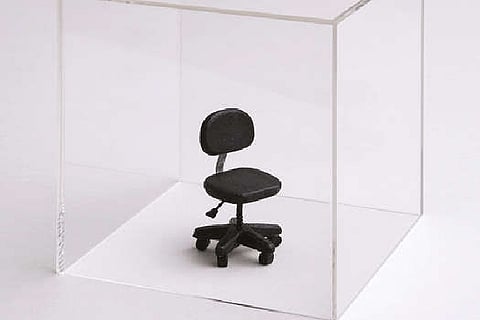

Chennai
The more time we spend indoors with other people, the more likely we are to breathe each other’s exhaled air — and germs. The vast majority of scientists now agree that the coronavirus is airborne, and infectious droplets can linger in the air, float around the room or build up in spaces with poor air flow, like conference rooms. Early in the pandemic, a coronavirus outbreak on the 11th floor of an office building in South Korea showed how just one infectious person can increase the risk for everyone in a workplace. Out of 216 people on the floor, 94 were infected. Most of the infected worked in rows of desks grouped on one side of the office.
Even before COVID-19, it was clear that indoor air quality could affect workers’ health. A well known Harvard study of more than 3,000 workers showed that sick leave increased by 53 percent among employees in poorly ventilated areas. While vaccination requirements and masking remain a first line of defense against COVID-19, ventilation improvements in schools and workplaces are essential to stopping the spread of the coronavirus, said Dr. Ashish K. Jha, dean of the Brown University School of Public Health.
“Improving indoor air quality can be a really powerful tool,” said Dr. Jha. In addition to asking questions about ventilation, you should ask about vaccination policies, staggered workdays to reduce capacity, COVID testing plans, mask requirements and how the building is monitoring outside workers, like delivery people and cleaning crews.
And while some of the technical details around air quality can be confusing, you don’t have to be a ventilation expert to figure out what extra precautions your employer has taken to keep you safer during the pandemic. Asking about efforts to improve indoor air quality can help you make decisions about how much time you might spend there, whether to mask up or buy a portable air cleaner or whether to change your work schedule or work from home, if it’s an option.
Here are questions you can ask your human resources or facilities office, depending on who handles return-to-office questions at your workplace. The questions are also useful for asking about air quality improvements at gyms, in classrooms and even in restaurants and other public spaces. Note that most buildings won’t implement all of these changes, but even one or two of them can make a difference.
Most newer buildings rely on mechanical heating, ventilation and air-conditioning systems, known as HVAC, that use a combination of air filters and outdoor air to dilute and remove viral particles and other pollutants. Buildings can take a number of steps to improve the performance of ventilation systems and increase the amount of fresh air. Air quality experts recommend adjusting outdoor air dampers, which are movable plates that can bring in more outside air. This isn’t advised in communities with poor outdoor air quality, such as areas with active wildfires. Some older buildings and classrooms may not have modern ventilation systems, but simply opening windows can improve air quality. A recent study of infected college students in an isolation dormitory at the University of Oregon found that opening a window could reduce the amount of coronavirus in a room by half.
While opening a window can help, the effect is greater if you can cross ventilate by opening windows on different sides of the room. Open windows aren’t practical during cold weather or in areas with poor outdoor air quality. Adding box fans to windows and turning on exhaust fans in kitchen and bathroom areas can also improve ventilation in homes and in buildings without modern systems.
Parker-Pope covers health for NYT©2021
Visit news.dtnext.in to explore our interactive epaper!
Download the DT Next app for more exciting features!
Click here for iOS
Click here for Android